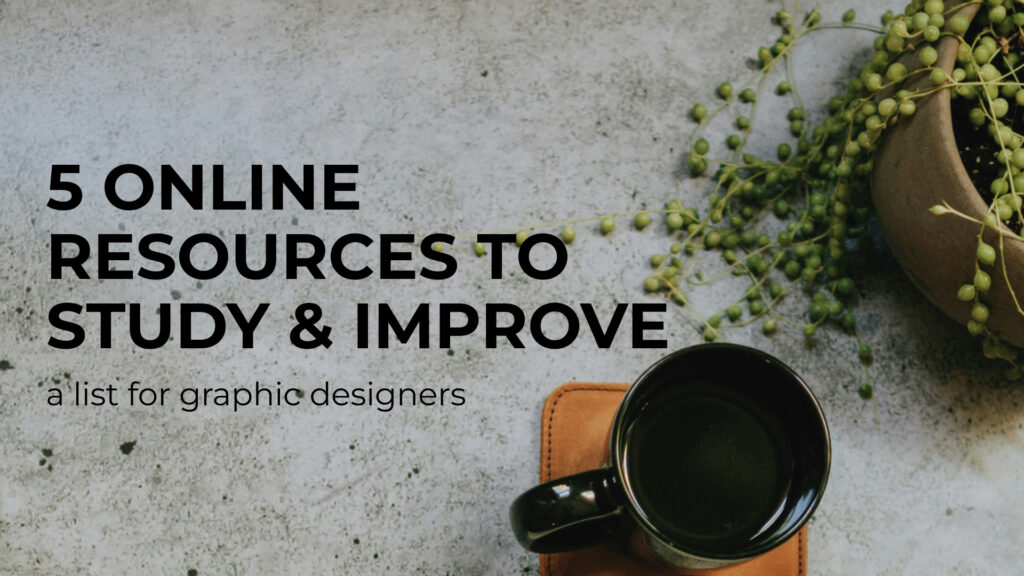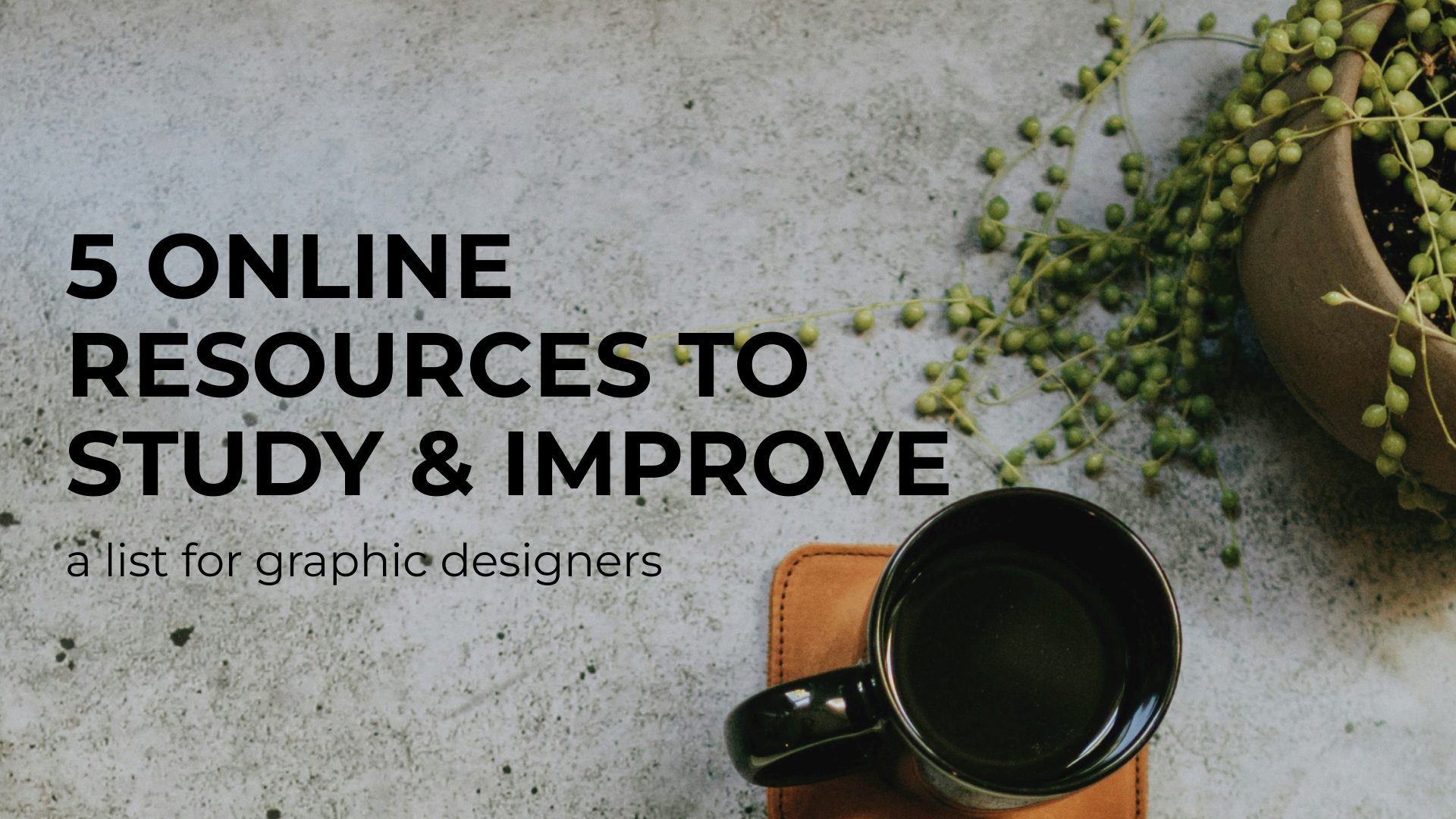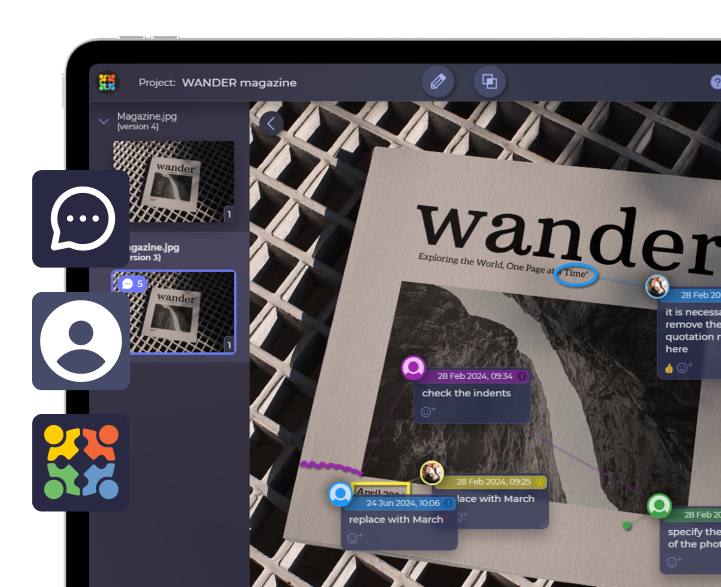The phrase “you live, you learn” applies to graphic design better than anything else. The reason is that creative spheres are like living organisms that continually develop and evolve into new forms.
Being synonymous with creativity, innovation drives the flow of graphic design. Essentially, it graces us with new techniques, trends, and tools. And the bad news is that if you don’t keep up with this living learning curve, you fall behind and bite the dust. Harsh, but that’s the way it works.
However, the good news is that it’s never too late to learn. Just don’t stop once you’ve gained your education or successfully finished a course. Practise, keep your mind open, and challenge yourself to stay in the game. And to help you get started, I’ve gathered a bunch of great resources to polish up your graphic design skills. We’ll start with something most obvious.
Table of contents:
1. Online Learning Platforms
There are plenty of resources to help you upgrade your design skills, and the most structured one is online courses. Signing up for such a course will be a great systematic practice that often rewards you with a fancy certificate for your CV in the end. Although the drawback is that online learning platforms mostly require fees.
Among popular examples, you may have heard of Coursera. It’s a platform where you can sign up for specialized courses and even access university-based academic content with practical applications. Their partners’ list includes Adobe, Google, CalArts, the University of Colorado, Michigan, Tokyo, Sydney, and so on. Most Coursera programs offer free trials, though.
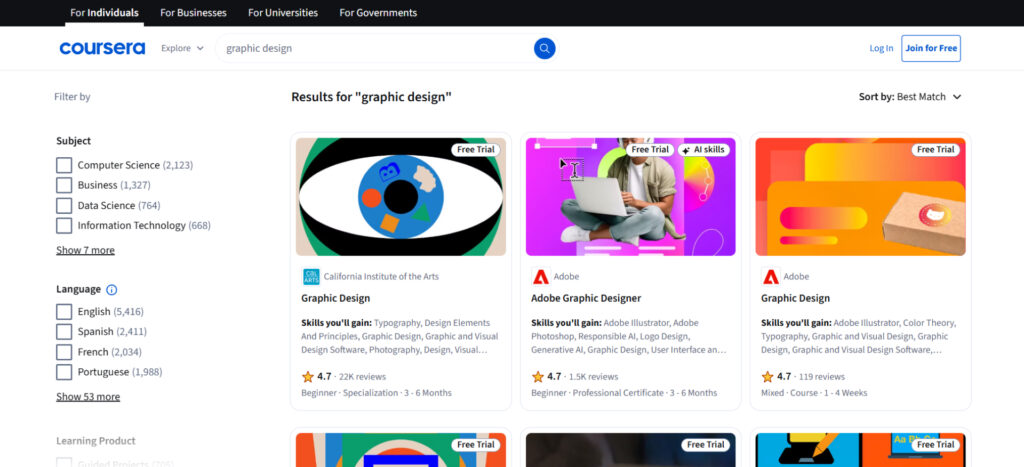
Skillshare is another renowned platform where you can learn skills from various experts and engage with other users through its community. The same goes for Domestika – a learning platform designated specifically for creative professionals. Their courses cover everything, from traditional art to Instagram branding strategies, with the average price of $50.
It’s also worth mentioning some of the free learning resources provided by well-known design software. For instance, Adobe Learn is full of various tutorials, mainly based on their products. Similarly, Canva has a so-called Design School, which includes courses, lessons, practical activities, and cheatsheets. Moreover, some of its courses provide shareable certificates.
2. Design Challenges
If long-term commitment scares you or you’re just tired of the traditional way of learning, try challenging your bored brain. Such practices make you step out of your comfort zone, as constraints tend to stimulate creative solutions. Besides, a couple of challenges in and – voila, you’ve got yourself a worthy portfolio.
What if you had to design a new artwork every day for roughly three months? Because that’s what you get once you subscribe to Daily UI. For 100 days, they will send you UI and UX design prompts. Completing and posting them on either Dribble or Twitter can earn you random rewards, such as product discount codes.
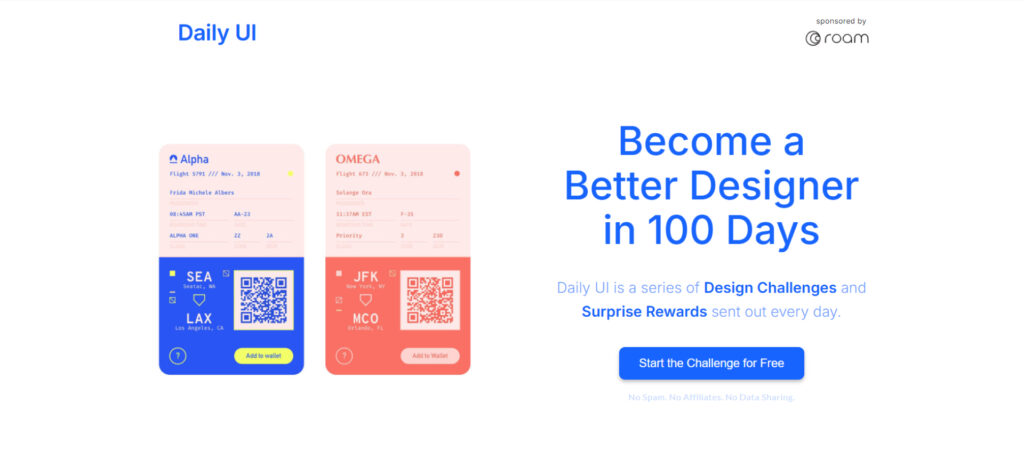
Can you survive till the 100th prompt? If not, HackDesign is a lighter version of the previous challenge. It only calls you to action once a week, providing an email with lessons and exercises to polish up your skills.
Another great idea is to practise your understanding of creative briefs by working with the BriefBox’s library. Apart from the design course, this platform has a collection of briefs from fictional companies that you can submit your work to and have fun with the community.
And if you prefer working solo and don’t seek feedback, a quick challenge for you would be Sharpen Design. This simple tool generates random design prompts to help you develop critical thinking.
3. Communities and Forums
However much you like to practise solo, real growth is impossible without proper feedback. That’s why communities exist – online spaces for people with similar interests and aspirations to share experiences, knowledge, and support. Besides, such places often serve as good soil for networking opportunities.
Such community giants as Behance and Dribbble are definitely worth your attention. They’re the visit card that shows your portfolio and contact information, making you available to find and hire. They work just as well in terms of seeking inspiration and feedback from other users.
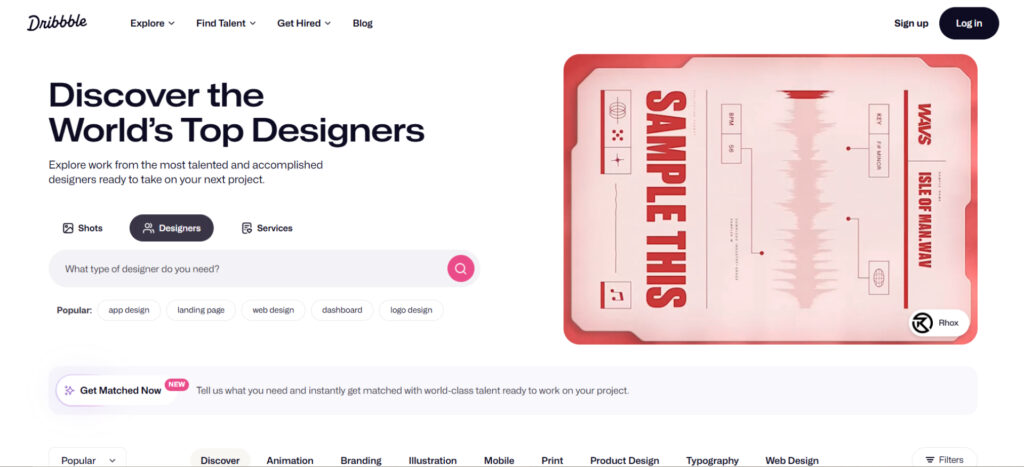
Another great source of inspiration is the Figma Community with its huge collection of user-created content. Apart from being a great design tool as it is, Figma offers you a wide range of useful plugins, wireframes, templates, and other modifiable components. With free access to it, you can study the most popular assets and break them down into details to see how good design works.
Given that you need a more hands-on communication, Reddit can work as well. You can ask any kind of question or request feedback via various subreddits, such as r/graphic_design, r/typography, or r/design_critiques – you name it. Reddit’s voting system will show you the most objectively useful advice. Just remember that it’s an open forum and not all people choose to be respectful and nice, alas.
Get professional feedback
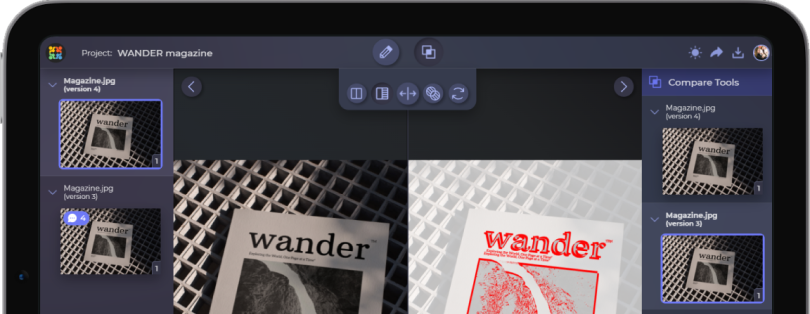
There’s no growth without proper feedback. And Approval Studio knows best what a good review is
Start a Free Trial4. YouToube Channels for Designers
The list of free learning resources wouldn’t be complete without mentioning YouTube creators. The fact that you can easily access video lessons and design insights from professionals without the professional price tag couldn’t be more awesome. In a nutshell, you can search for whatever specific lesson you need directly on YouTube, but here are some useful channels to check out:
- Yes I’m a Designer is especially worth your attention if, besides design theory, you’re looking for ways to improve your Adobe software skills. Martin demonstrates advanced techniques for such apps as Photoshop, InDesign, and Illustrator. Watching his videos, you can also learn how to manage projects and creative workflows.
- Given that you want to learn to deliver a meaningful message through your design, try Satori Graphics. The channel’s content is focused mainly on the psychological part of the graphic design process. With the help of its tutorials, not only can you upgrade your software skills, but also learn behind the scenes of an impactful design.
- Take a look at Abi Connick’s channel if you are seeking advice as a freelance designer. Not only does she share tips on how to build a worthy portfolio and where to find clients, but she also provides lessons on branding strategies and design tutorials. Adobe Illustrator hacks and self-promotion techniques are what the channel is made of.
- Looking for resources to polish up your UI/UX and web design skills? Flux Academy has a whole 3-hour-long video on web design for beginners in their arsenal. Here you will master the fundamentals of working with Figma, WordPress, and Webflow. Aside from that, the channel breaks down core design principles and portfolio-building techniques.
- The Futur is your to-go if you’ve been considering launching your own design agency. The channel will help you out with understanding personal brand strategy and how to keep a creative business running. Additionally, alongside the creative entrepreneurship, The Futur also provides important basic design principles content.
5. Blogs and Podcasts
Apart from YouTube videos, open graphic design resources are also available in the form of podcasts or blogs. These are easy and quick informative ways to either learn something new or gain some inspiration. You can read a 5-minute blog post during a break, and a podcast can serve as great background content while you’re busy having lunch.
Adobe Creative Cloud provides its users with all kinds of services, and its blog is not an exception. Their professional content is versatile and caters to all kinds of creatives, from illustrators to motion designers.
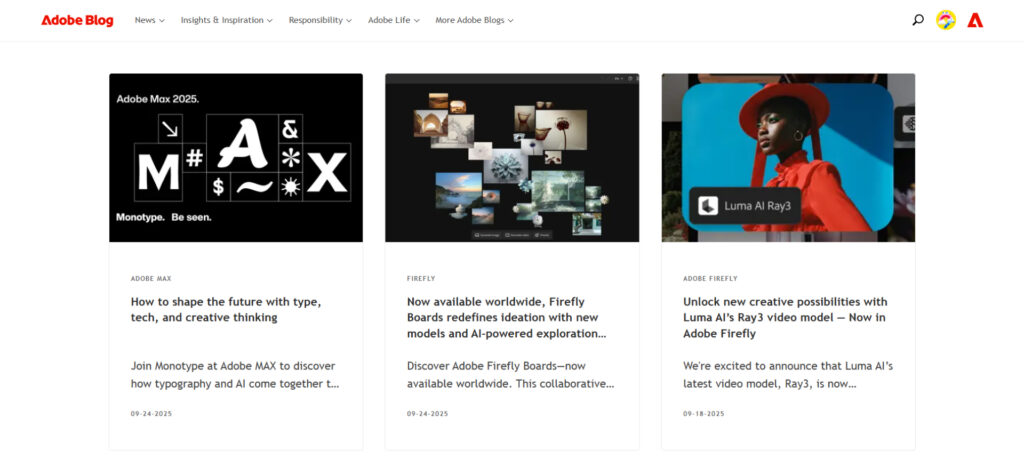
Another leading blog about design is Creative Bloq, which also offers a daily dosage of interesting insights and inspiration. Their arsenal includes webinars, guides, trends, and design news. Naturally, there is a great bunch of different blogs that also provide interviews, real-life stories, reviews, and other similar content. Among the popular ones, we have Abduzeedo, Creative Bloom, DesignWorkLife, The Inspiration Grid, and AIGA: Eye on Design.
Speaking of podcasts, audio learning is a perfect choice for multitaskers. The Futur, whose YouTube I’ve mentioned earlier, has a podcast as well. The episodes swirl around the idea of how design, marketing, and business done right can bring you success.
Similarly, the UI Breakfast podcast offers you a whole buffet of industry experts’ insights and actionable knowledge. But if you prefer something rather straightforward and no-bull, try out The Angry Designer. Here you’ll learn how to deal with toxic clients, burnouts, imposter syndrome, and ageism, while discovering how to build a lasting career in the design industry.
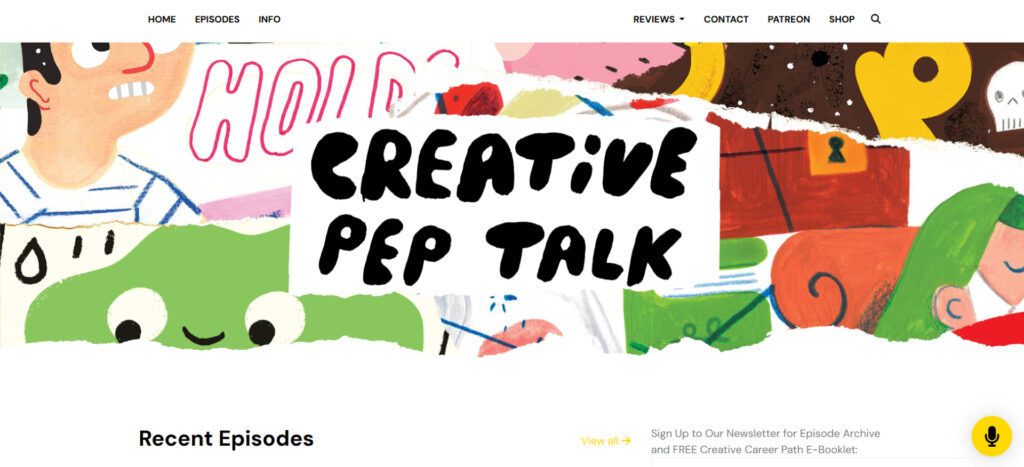
Honourable mention goes to Creative Pep Talk, which is not directly related to graphic design. This podcast is rather about creativity overall. The focus falls on the ways you can turn creativity into consistency and therefore avoid hitting the rock bottom of art block.
How Not to Spoil Your Learning Curve
An art block is something that graphic designer parents would scare their kids with. And before anything else, the quickest way to get it is to burn yourself out with overwork. The same applies to learning stuff – if you overdo it, you will simply lose interest or get overwhelmed with the amount of things you have still to learn. And we don’t want that happening.
That’s why you’ve got to start with setting specific, measurable goals for each resource you use. Analyze Dribbble designs daily, complete one Skillshare project weekly, listen to podcasts on the commute to work, and watch two YouTube tutorials on the weekend. Pace yourself at a comfortable tempo and remember that slow progress is still progress.

Note that it’s best to apply what you learn immediately, as theory without practice is often forgettable and leads nowhere. Each new technique should find its way into a personal project to stick with you. However, don’t try using everything at once: try out each resource and technique separately, see what works best for you, and create a balanced personal approach.
The secret of success is always being open to new information and challenges. Stay curious, make mistakes, but most importantly, take care of yourself! You can’t really learn much if your well-being is not quite well. That’s something we’ve discussed more in one of our previous articles about improving your work performance. I think it applies to learning as well, so you’re more than welcome to check it out.
Final Words
To master graphic design, it’s crucial to apply consistent effort over time. No panacea resource holds all the answers and knowledge. Naturally, your growth will arise from combining multiple learning sources strategically and staying consistent in a long-term commitment.
Essentially, don’t go and push yourself up against the wall. You can start small, then notice which learning style clicks with your preferences more. Just build your momentum gradually, keeping track of what worked and what didn’t. And most importantly, remember why you started. The truth is, every big expert was once a beginner themselves. It’s always hard to start something new, but persistence is what separates successful designers from those who quit.
The design industry rewards those who adapt and grow. So, invest in your skills and let them gradually determine your career trajectory. As my uni professor would often say, practice makes perfect.

 TEAM SOLUTIONS
TEAM SOLUTIONS WORKFLOW SOLUTIONS
WORKFLOW SOLUTIONS



 REVIEW TOOL
REVIEW TOOL PROJECT MANAGEMENT
PROJECT MANAGEMENT TOOLS & INTEGRATIONS
TOOLS & INTEGRATIONS
 CLIENT INTERVIEWS
CLIENT INTERVIEWS








